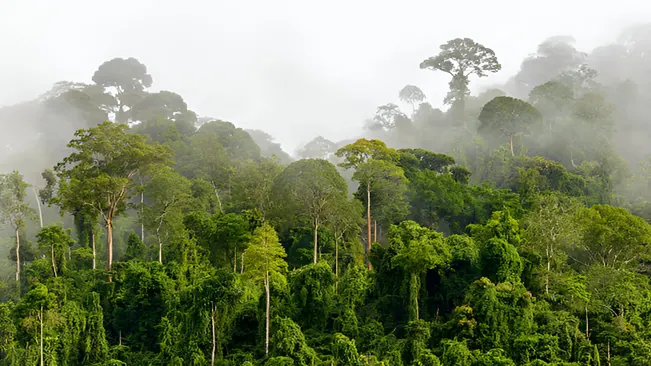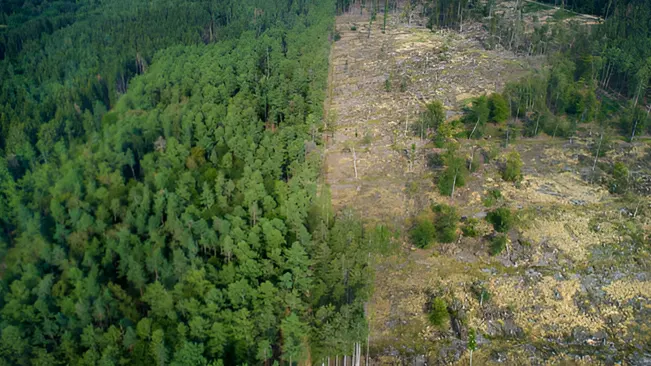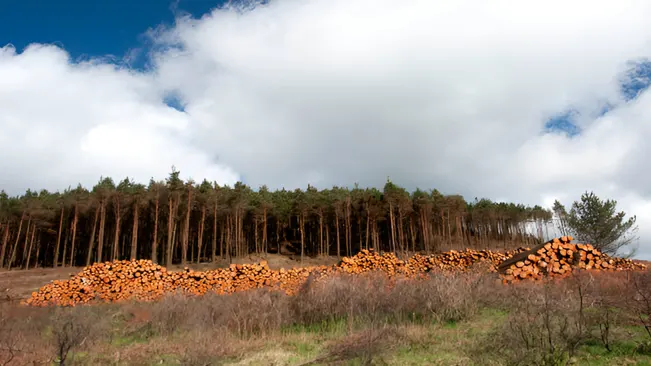What is Forest Biodiversity
- September 11, 2024
- 0 comment
Forest biodiversity is the variety of life forms in forests, crucial for ecosystem health and providing vital services. Forest biodiversity refers to the variety of life forms within forest ecosystems, including plants, animals, fungi, and microorganisms, and the complex interactions between them. It is a critical component of global biodiversity and plays a vital role in maintaining ecological balance and providing numerous ecosystem services.
Understanding Forest Biodiversity
Forests, which cover about 31% of the Earth’s land area, are among the most diverse ecosystems on the planet. They are home to an immense variety of species, each adapted to the specific conditions of their habitat. Forest biodiversity encompasses several levels:
Species Diversity
- Flora: This includes trees, shrubs, herbs, and grasses. Forests often feature a rich diversity of plant species that vary in size, structure, and function. For instance, tropical rainforests can contain thousands of tree species, while temperate forests might have fewer species but still maintain significant diversity.
- Fauna: Forests are home to a wide range of animals, including insects, birds, mammals, reptiles, and amphibians. Each species has unique ecological roles. For example, some insects pollinate plants, while others decompose organic matter, contributing to nutrient cycling.
- Microorganisms: Forest soils are teeming with microorganisms, including bacteria and fungi. These organisms play essential roles in nutrient cycling, soil formation, and decomposition.
Genetic Diversity
Genetic diversity refers to the variation of genes within a species. It is the genetic variation that exists among individuals of the same species.
- Within-species Variation: Genetic diversity within a species is crucial for its adaptability and survival. For example, genetic variation in a population of trees can lead to different levels of resistance to diseases and pests.
- Adaptation and Resilience: Populations with high genetic diversity are better equipped to adapt to changing environmental conditions and stressors. This genetic pool allows species to evolve, improving their chances of survival.
Ecosystem Diversity
Ecosystem diversity refers to the variety of forest types and the differences in their structure and functions. It includes the range of habitats and ecological processes within forests.

- Forest Types: Different types of forests, such as tropical rainforests, temperate deciduous forests, and boreal forests, each have distinct species compositions and ecological processes. For instance, tropical rainforests have high species richness and complex layered structures, while boreal forests are characterized by coniferous trees and colder climates.
- Structural Variation: Forest ecosystems can vary in their physical structure, including canopy layers, understory, and forest floor. These structural differences influence habitat availability and the types of species that can thrive in each environment.
- Ecological Processes: Each forest type supports unique ecological processes, such as nutrient cycling, energy flow, and water regulation. These processes are crucial for maintaining ecosystem health and function.
Importance of Forest Biodiversity
Ecosystem Services
- Climate Regulation: Forests act as carbon sinks, absorbing and storing carbon dioxide from the atmosphere. This process helps mitigate climate change by reducing the overall concentration of greenhouse gases. Additionally, forests influence local weather patterns by affecting humidity and temperature.
- Water Regulation: Forests play a key role in the hydrological cycle. They help regulate water flow by enhancing groundwater recharge, reducing surface runoff, and preventing soil erosion. Forests also maintain water quality by filtering pollutants and sediments from rainwater.
- Soil Fertility: Forest ecosystems contribute to soil health through processes such as nutrient cycling and organic matter decomposition. Fallen leaves, branches, and other organic materials decompose and enrich the soil with essential nutrients, promoting plant growth and maintaining soil structure.
- Pollination and Seed Dispersal: Many forest species, including insects, birds, and mammals, are involved in pollinating plants and dispersing seeds. This activity is vital for the reproduction and regeneration of forest plants, which in turn supports overall forest health and diversity.
Economic Value
- Timber and Non-Timber Products: Forests provide timber for construction and fuel, as well as non-timber products such as fruits, nuts, and resins. Sustainable management of forest resources ensures that these products can be harvested without depleting the ecosystem.
- Pharmaceuticals: Many medicinal plants and fungi found in forests have been used for centuries in traditional medicine and have contributed to the development of modern pharmaceuticals. Discoveries in forest biodiversity can lead to new treatments and drugs.
- Ecotourism: Forests attract tourists seeking nature-based experiences. Ecotourism promotes conservation awareness and generates revenue for local communities and conservation projects, encouraging the protection of forest ecosystems.
Cultural and Recreational Value
- Cultural Practices: Indigenous and local communities often have deep cultural and spiritual connections to forests. These forests may be considered sacred or play a central role in traditional practices, ceremonies, and folklore.
- Recreational Opportunities: Forests offer various recreational activities such as hiking, birdwatching, and camping. Engaging with nature in forests contributes to physical health, relaxation, and mental well-being, providing a respite from the stresses of modern life.
Resilience to Change
- Disease and Pest Resistance: Diverse forest ecosystems are better equipped to cope with diseases and pests. The presence of a variety of species can prevent the spread of harmful agents and maintain ecological stability.
- Adaptation to Climate Change: High biodiversity allows forests to adapt to changing environmental conditions. Different species have varying tolerances to temperature and moisture changes, which helps maintain overall forest health and function.
- Recovery from Disturbances: Forests with rich biodiversity can recover more effectively from disturbances such as fires, storms, or logging. The variety of species and ecological processes contribute to natural regeneration and restoration.
Threats to Forest Biodiversity
Deforestation
Deforestation involves the large-scale removal of trees and clearing of forests for purposes such as agriculture, urban expansion, and logging.

- Habitat Loss: The destruction of forests leads to the loss of habitat for countless species, leading to declines in wildlife populations and even extinction.
- Disruption of Ecosystems: Removing trees disrupts the complex interactions between species and alters nutrient cycling, water flow, and soil structure.
- Climate Change Contribution: Deforestation releases stored carbon dioxide into the atmosphere, exacerbating global climate change.
Climate Change
Climate change results in shifts in temperature and precipitation patterns, affecting forest ecosystems globally.
- Altered Species Distribution: Climate changes can force species to migrate to cooler or wetter areas, potentially leading to mismatches between species and their optimal habitats.
- Increased Frequency of Extreme Events: More frequent and severe weather events like droughts and storms can damage forests and stress species.
- Ecosystem Changes: Altered climate conditions can change forest composition and structure, affecting the balance of ecological interactions.
Pollution
Pollution includes the contamination of air, water, and soil with harmful substances from industrial, agricultural, and urban sources.
- Forest Health: Air pollution (e.g., sulfur dioxide, nitrogen oxides) can damage tree leaves and inhibit growth. Water pollution can contaminate soil and affect plant and animal life.
- Biodiversity Loss: Pollutants can disrupt reproductive processes and kill sensitive species, leading to reduced biodiversity.
- Soil Degradation: Contaminants can alter soil chemistry and affect nutrient availability, impacting plant health.
Invasive Species
Invasive species are non-native organisms that spread rapidly and cause harm to native species and ecosystems.
- Competition for Resources: Invasive species often outcompete native species for resources like nutrients, light, and space, leading to declines in native populations.
- Ecosystem Disruption: They can alter habitat structures, change nutrient cycling, and introduce new diseases or parasites.
- Loss of Native Species: Invasive species can drive native species to extinction by disrupting their life cycles and habitats.
Overexploitation
Overexploitation involves the excessive and unsustainable use of forest resources, such as logging, hunting, and collection of non-timber products.

- Species Decline: Overharvesting of species for timber, medicine, or food can lead to population declines and, in extreme cases, extinction.
- Habitat Degradation: Unsustainable logging practices can degrade forests, reduce their ability to recover, and lead to soil erosion and loss of biodiversity.
- Disruption of Ecosystem Functions: Overexploitation can disrupt ecological processes, such as pollination and seed dispersal, impacting the health of forest ecosystems.
Conservation Strategies
To protect and preserve forest biodiversity, several strategies are employed:
- Protected Areas: Establishing national parks, wildlife reserves, and conservation areas to safeguard critical habitats.
- Sustainable Forestry: Implementing practices that minimize environmental impact and ensure the long-term health of forest ecosystems.
- Restoration Projects: Rehabilitating degraded forests and replanting native species to restore biodiversity and ecosystem functions.
- Community Engagement: Involving local communities in conservation efforts and promoting sustainable use of forest resources.
- Research and Monitoring: Conducting scientific research to understand forest ecosystems and monitor changes in biodiversity.
Conclusion
Forest biodiversity is a cornerstone of ecological health and human prosperity. By understanding its components, recognizing its importance, and addressing the threats it faces, we can work towards preserving these vital ecosystems for future generations. Protecting forest biodiversity not only supports the myriad of life forms that call forests home but also ensures the continued provision of essential services that sustain life on Earth.
FAQs
1. What is forest biodiversity?
Forest biodiversity refers to the variety of living organisms within forest ecosystems, including plants, animals, fungi, and microorganisms. It encompasses species diversity, genetic diversity, and ecosystem diversity.
2. Why is forest biodiversity important?
Forest biodiversity is crucial because it supports ecosystem services such as climate regulation, water purification, soil fertility, and pollination. It also contributes to economic benefits, cultural values, and resilience to environmental changes.
3. How does forest biodiversity affect climate change?
Forests play a significant role in climate regulation by sequestering carbon dioxide. High biodiversity in forests helps maintain this function and enhances the resilience of forests to climate-related stressors.
4. What are the main threats to forest biodiversity?
Major threats include deforestation, climate change, pollution, invasive species, and overexploitation of forest resources. These factors can lead to habitat loss, species decline, and ecosystem disruption.
5. How can we protect forest biodiversity?
Protection strategies include establishing protected areas, practicing sustainable forestry, restoring degraded forests, engaging local communities in conservation efforts, and conducting research and monitoring.
6. What is the difference between species diversity and genetic diversity in forests?
Species diversity refers to the number and variety of different species within a forest. Genetic diversity refers to the variation of genes within a species, which is essential for adaptability and resilience.
7. How do invasive species impact forest biodiversity?
Invasive species can outcompete native species for resources, alter habitat structures, and disrupt ecological processes. This can lead to reduced biodiversity and changes in ecosystem functions.
8. What role do forests play in water regulation?
Forests influence water cycles by regulating precipitation, enhancing groundwater recharge, and maintaining water quality. They help prevent soil erosion and reduce runoff, contributing to healthy watersheds.
9. How can community involvement benefit forest conservation?
Involving local communities in conservation efforts ensures that the needs and knowledge of those who depend on forests are integrated into management practices. This can lead to more effective and sustainable conservation outcomes.
10. What are some examples of successful forest biodiversity conservation projects?
Examples include the establishment of large-scale protected areas like the Amazon Rainforest Reserve, community-led reforestation initiatives such as the Green Belt Movement in Kenya, and sustainable forestry certifications like those from the Forest Stewardship Council (FSC).
In summary, forest biodiversity represents the rich tapestry of life that thrives within forest ecosystems. It encompasses the myriad species, genetic variations, and complex interactions that sustain these vital habitats. Protecting and preserving forest biodiversity is essential for maintaining ecological balance, ensuring the provision of crucial ecosystem services, and supporting the health of our planet. By valuing and safeguarding this diversity, we contribute to the resilience and beauty of forests, benefiting both nature and humanity for generations to come.

Kristine Moore
Forestry AuthorI'm Kristine Moore, a seasoned garden landscaping professional with over 30 years of experience. My extensive career has been dedicated to transforming outdoor spaces into stunning, sustainable landscapes. With a deep understanding of horticulture, design principles, and environmental stewardship, I have become a respected figure in the field, known for creating harmonious, visually appealing, and eco-friendly gardens. My commitment to excellence and continuous learning in landscaping trends and techniques has solidified my reputation as an expert in garden design and implementation.










Leave your comment